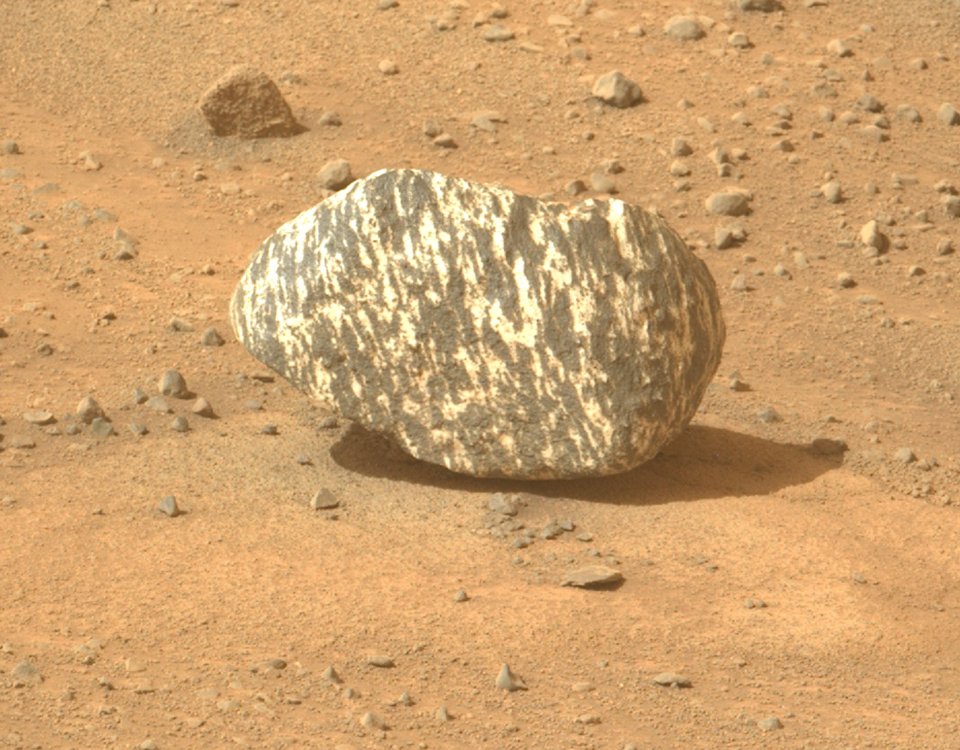Mars Stripes: Unveiling the Mystery of ‘Zebra Rock’ Discovered by Perseverance Rover!
NASA’s Perseverance Rover has stumbled upon a captivating geological phenomenon on Mars—a black-and-white striped rock that’s piqued the curiosity of scientists and space enthusiasts alike. This intriguing stone, affectionately named ‘Freya Castle’ or "zebra rock," has been discovered in the Jezero Crater, an area believed to hold remnants of ancient alien life. But what makes this fractured surface so extraordinary? Let’s delve into this Martian mystery!
What Is the ‘Zebra Rock’ Discovered by Perseverance Rover?
The ‘zebra rock’ is unlike anything previously observed on the Martian landscape, leading scientists to speculate about its origins and formation. Found in the Jezero Crater—thought to be what remains of an ancient lake—this stunning rock is around 20 centimeters in size and has drawn attention for its unique striped pattern. This surprising find has scientists buzzing with excitement as they explore the implications of its existence.

Discovery in the Depths of Jezero Crater
The Jezero Crater is a fascinating location where Perseverance has been exploring since landing in July 2020. It’s here that the rover spotted the zebra rock while traversing a seemingly mundane pebbly terrain. Operatives on the mission noted a peculiar texture in low-resolution images, prompting their investigation. The rock was observed on a flat sandy plane positioned above the steep slopes of the crater, an area that’s been an exciting focus for scientists in search of signs of life beyond Earth.
The Initial Reaction to Zebra Rock’s Unique Formation
The moment NASA’s team examined the multispectral observations of the rock, they realized just how extraordinary it was. The images derived from the Mastcam-Z camera captured insights beyond the capabilities of the human eye, including infrared and ultraviolet details. What once appeared ordinary transformed into a captivating puzzle that sparked wild theories and discussions across the internet. Enthusiasts and scientists alike are eager to understand its mysterious formation and what it might reveal about Mars’ geological history.
Is ‘Freya Castle’ the Key to Ancient Life on Mars?
The excitement does not end with its peculiar appearance; the zebra rock may also play a significant role in understanding the Jezero Crater’s history as a former lake. Its stripes suggest a potential complexity in its makeup, possibly hinting at a mixture of igneous and metamorphic rock processes. If accurate, this discovery could unveil clues about the planet’s ancient environment and even the possibility of past life.
A Deep Dive into Rock Types: Igneous vs. Metamorphic
What exactly are igneous and metamorphic rocks, and what does the presence of these types mean for zebra rock’s origins?
- Igneous rocks form from the crystallization and solidification of molten rock.
- Metamorphic rocks, on the other hand, originate from existing rocks that have undergone significant changes due to heat, pressure, or the presence of mineral-rich fluids.
The zebra rock displays characteristics that could indicate a combination of these processes. This has scientists hopeful that future encounters with similar outcrops could lead to more detailed measurements and understanding of this newly identified rock type.
Could Zebra Rock Be an Ancient Martian Treasure?
The implications of this fascinating geology are massive. Could this discovery lead to the first glimpses of ancient rocks that have been uplifted due to impact events? NASA remains optimistic. As Perseverance continues to traverse the Martian surface, every new finding could contribute valuable insights into the planet’s history.
Curious about Mars Travel? Here’s What You Need to Know!
While we marvel at discoveries like zebra rock, let’s consider the journey it takes to reach Mars.
- The distance from Earth to Mars can be staggering—between approximately 33.9 million miles (the closest approach) and an average of around 140 million miles.
- Spacecraft take anywhere between 128 to 333 days to make the voyage, depending on the technology and trajectory used.
These immense distances and timeframes remind us just how remarkable it is that we can send rovers like Perseverance to conduct such groundbreaking research.
In conclusion, the enigmatic zebra rock discovered by NASA’s Perseverance Rover presents a unique opportunity for scientists to unearth the mysteries of Mars’ past. As we follow this journey, only time will tell what further secrets the red planet may hold!

